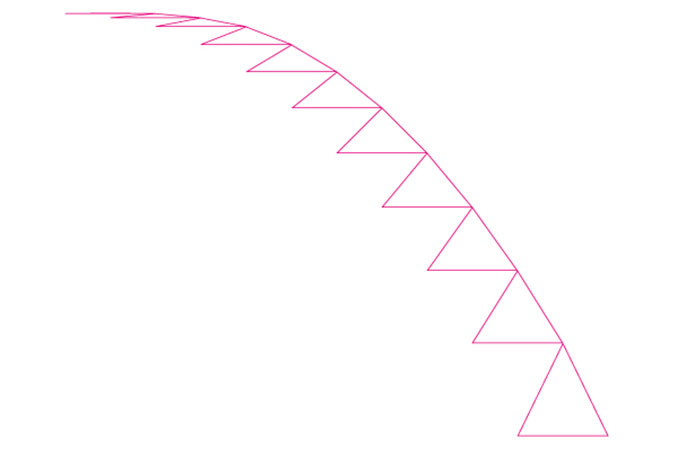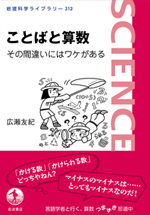Why don’t we call an equilateral triangle an isosceles triangle?

An introduction to academia starting with “Why?”
After making a list of questions which would pique anyone’s interest, we asked faculty members on campus who might be knowledgeable in these areas to answer them from the perspective of their respective expertise. Let’s take a look into the world of research through questions that you feel you know something about, but cannot answer definitively when actually asked.
Q17. Why don’t we call an equilateral triangle an isosceles triangle?
We learn about equilateral and isosceles triangles in elementary school. But isn’t an equilateral triangle just one type of isosceles triangle? Why is it treated differently?Reading the unexpressed meaning

This phrase has an ambiguous structure: you can’t tell whether the butterflies are pink or the cup itself is pink. Eye-tracking experiments reveal that most adults interpret it as the butterflies are pink, which is explainable by reference to the advantage gained in being able to process meaning in the order that you hear the words. Conversely, a higher proportion of children interpret the phrase to mean that the cup is pink. We’re beginning to understand that the interpretation depends on the placement of inflection (prosodic information) on a certain portion of the phrase when spoken, and that its timing and orientation produces different results for adults and children.
If you think about it mathematically and logically, the number 3 includes 2, so an equilateral triangle, in which all three sides are of equal length, is a type of isosceles triangle, which contains two sides of equal length. But even if that makes sense in logical terms, many people would argue that you don’t usually point at an equilateral triangle and say it is an isosceles triangle. That argument is correct in terms of pragmatics. There are always some basic understandings that are shared by both speaker and listener, which enable them to exchange information that isn’t necessarily expressed in the actual words they are using. Pragmatics explains those understandings. There is often a gap between interpretations based on what words mean in logical terms, and interpretations that derive the overall intended meaning of those words from information such as context and situation.
Take for example the instruction on an exam paper that says: “do not write two lines in a single line space on the answer sheet.” Readers are expected to interpret this to mean that they’re not permitted to write three lines or more, either. But another logical interpretation is that only two lines are not permitted, so it’s OK to write three or more. One year there was a bold exam taker with the courage actually to write three or more lines, which caused a buzz.
Sharing a variety of common understandings in the course of conversation with others is a kind of fundamental principle of communication that we acquire intuitively. The reason we share the understanding that we shouldn’t write three lines is because when expressing differences in scale, if we select an expression that denotes a certain size or quantity, the inclusion of anything larger than that is automatically negated. This is known as scalar implicature. If we apply this to the case of the triangles mentioned above, the statement that “two sides are of the same length” functions to restrict the interpretation so that the possibility of three or more sides is excluded. In other words, under the constraints of scalar implicature, saying that an equilateral triangle is a type of isosceles triangle doesn’t make sense.
Psycholinguists are doing research in many different languages, using all sorts of innovative methods, to determine how and at what stage children acquire this knowledge of scalar implicature.
Bias in guessing the meaning of unknown words
So how is this problem handled when teaching elementary school children? A guide issued by one textbook publisher suggests “gradually focusing attention” on the idea that an equilateral triangle is a type of isosceles triangle, but not pursuing this to the point that children see the equilateral triangle as a distinctive type of isosceles triangle. Clearly there is a reluctance to explain the equilateral triangle in this way from the outset.
When children encounter unknown words, they guess the scope of their meaning. For example, an adult may point to a train moving along the tracks and say the word “train” to a young child. Does the word refer to a specific type of transport, to forms of transport generally, or to all things that move? Or is the adult actually referring to the people on board the train? The child is required to guess the answer in the absence of any overt explanation. One of the biases at work when the child makes their judgment is the premise that “a single name refers to a single kind of object.” So if the child already knows the word “car” and the form of transport it refers to, they can deduce that this form of transport is not known as a “train.” However, if a teacher introduces the term “equilateral” to describe a certain type of triangle, but then proceeds to say that it’s also an “isosceles” triangle, this premise is contradicted. The reason that elementary school teachers don’t proactively teach children the inclusive relationships between key terms might be because they don’t want to cause confusion. But if a child notices these relationships for themselves, it’s certainly worth praising them proactively.

Kotoba to Sansu: Sono Machigai ni wa Wake ga Aru (“Language and Math: There’s a Reason for that Mistake”) (Iwanami Shoten, 2022) The multiplier, the multiplicand… this book explores the relationship between math and language through these and other complex expressions and intriguing answers used in elementary school math classes.
* This article was originally printed in Tansei 45 (Japanese language only). All information in this article is as of September 2022.



 Answered by Yuki Hirose
Answered by Yuki Hirose


